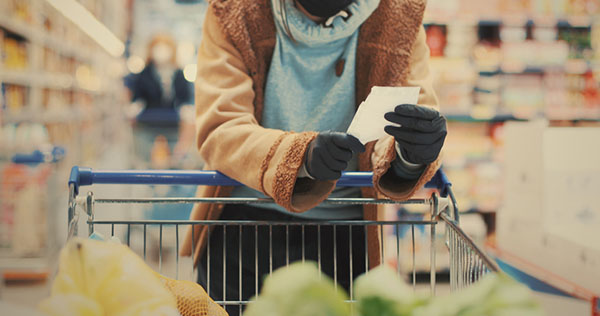We all have to eat. So unless you order out for every meal, chances are you’ve gone to the grocery store to buy some food items. (Obviously, the pandemic has changed things, as many order their groceries online and have it delivered or pick them up curb side.) Since we all have experience shopping, let’s share some super shopping stats!
And Here Are The Stats!
According to creditdonkey.com,
- 83% of shoppers use traditional supermarkets regularly for their edible purchases, as opposed to drugstores, warehouse clubs, supercenters, and gourmet grocers.
- Altogether, there are nearly 38,000 supermarkets in the United States. 70% of those are conventional grocery stores, with supercenters, gourmet stores, warehouse clubs, and military commissaries making up the remaining 30%.
- In 2018, the average number of items carried in a supermarket was 33,055.
- On an average day, 32 million Americans head to the grocery store. That works out to 1 in 7 adults who are shopping at any given time.
- Over 40% of shoppers say they go to more than one store to get all the things they need.
- 69% of women say they make a list before going shopping, compared with 52% of men.
- Women are more likely to clip coupons, with 57% of female shoppers collecting them compared with 41% of men.
- Women take a little longer to get their shopping done than men, averaging 42 minutes versus 39. The under 30 crowd also takes longer, averaging a 43-minute trip compared with 40 minutes for shoppers aged 30 and up.
- Among primary shoppers for multi-person households, 70% are female. For the non-married crowd, 53% are women.
- Approximately 68% of grocery shoppers say they’re solely responsible for doing all the shopping for their family.
- Nearly 25% of grocery shopping dollars are spent on processed foods and sweets.
- 25% of shoppers say they specifically look for foods that are locally grown or sourced.
Here’s Why You Should Scan Your Shopping
It doesn’t matter how or where you shop, just please remember to record all of your purchases. By recording your purchases NCP can determine the following:
- Which items sell only when there is a sale vs. which items sell regardless of price.
- Which flavors sell in certain areas so retailers know which ones to stock up on.
- Which items sell together (hot dogs, buns, ketchup, mustard, for example), so promotions can be created.
- How a new product/size/flavor sells in the marketplace.
- Whether consumers make multiple small trips to a retailer or one large stock-up trip.
- What is the most popular day for shopping.
- How online trips are eating into brick-and-mortar store sales.
- How the pandemic has changed shopping behaviors.
We hope you enjoyed reading about these super shopping stats! Have a nice weekend!
Best Regards,
Taylor
Also see:
- What’s The Best Time/Day To Go Grocery Shopping? (October 22, 2020)



All stats play an very important. Point in shopping trends. I feel they can be misleading to the point of upper shelf shopping to lower shelf shopping. Shopping in it self is a given. But when you have to buy less in times like these. It hurts to sacrifice fresh meats. For can meats.
Very interesting stats.
Stats are so interesting. It always fascinates me when I get a glimpse into other’s. I appreciate you sharing.
Interested in seeing the difference in everything since this pandemic struck the entire world; the beginning, mid, current etc, as opposed to prior and when it is finally over….
That would be quite interesting!
Thanks for the stats. I always wondered what you were doing with the statistics.